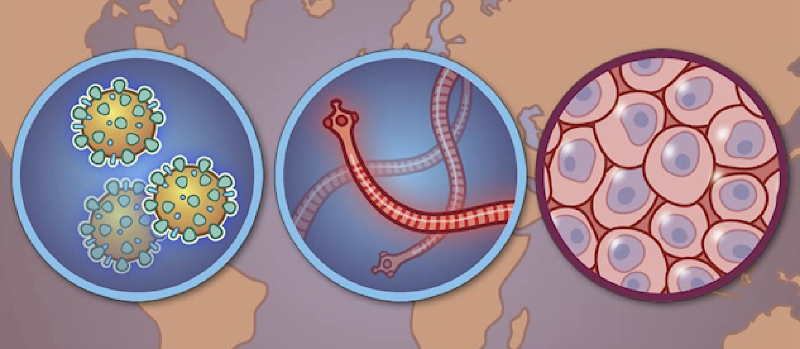Hymenolepis nana (also known as dwarf tapeworm). The man resented with fatigue, fever, cough, and weight loss of several months’ duration.
Stool examination indicated that the man was once infected with H. nana. Researchers observed nests of monomorphic, undifferentiated cells in the man, who was infected with HIV. The morphologic features and invasive behavior of the cells were characteristic of cancer, but their small size suggested a nonhuman origin. By PCR they identified H. nana DNA and through deep sequencing they also identified H. nana structural genomic variants that are compatible with mutations described in cancer. These indicated a parasite-origin of the malignant cells, which could develop from stem cells in the tapeworm.
“These stem cells typically generate tapeworm segments, but they did not do so, because they are in the wrong place and obtained wrong environmental information”, suggested by P. Olson at the Natural History Museum in London.
See the original research article: Malignant Transformation of Hymenolepis nana in a Human Host
